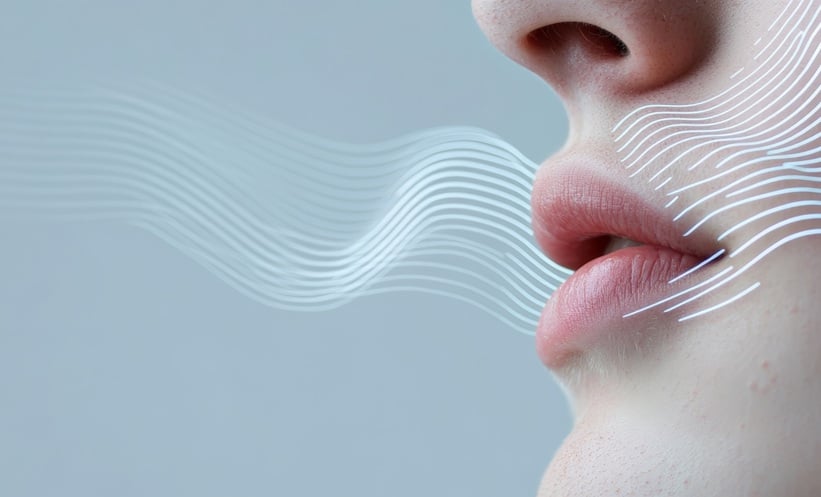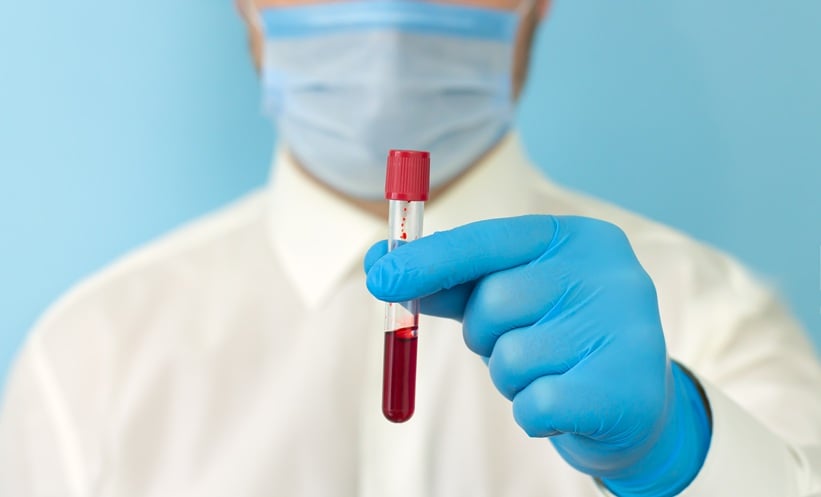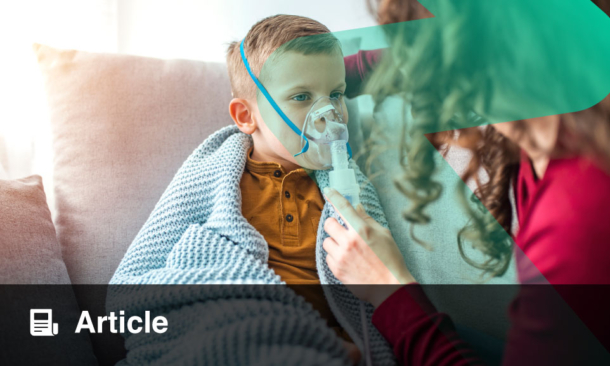Chairpeople: Jonathan Grigg1
Speakers: Wim van Aalderen,2 Jonathan Grigg, Stephanie Dramburg3
1. Centre for Genomics and Child Health, Queen Mary University of London, UK
2. Department of Paediatric Respiratory Diseases, Amsterdam UMC, the Netherlands
3. Department of Paediatric Respiratory Medicine, Immunology and Critical Care Medicine, Charité Universitätsmedizin Berlin, Germany
Disclosure: Grigg reports personal fees from GlaxoSmithKline, Vifor Pharma, OM Pharma, AstraZeneca, Novartis, and OMRON Healthcare Europe BV. Dramburg reports advisory fees from OMRON Healthcare Europe BV. Van Aalderen has declared no conflicts of interest.
Acknowledgements: Writing assistance was provided by Julia Granerod, London, UK.
Support: The publication of this article was funded by OMRON Healthcare Europe BV.
Citation: EMJ Respir. 2021;9[1]:40-46.
Meeting Summary
Wheeze is difficult to describe and recognise, and there is a need for clear guidelines on diagnosing wheeze. Discrepancy exists between what the parent may describe as wheezing and clinician-confirmed wheeze. Wheeze detection in daily practice occurs mainly by physician confirmation using a stethoscope; however, a diagnostic difficulty arises when parents hear wheezing that is no longer present during medical consultation. Accurately assessing the presence or absence of wheeze is important for therapeutic trials and, since there is no common understanding/definition of wheeze, it is difficult to conduct studies. Current outcomes for trials in preschool wheeze are suboptimal, apart from in hospital assessment. Promising technological solutions for disease diagnosis and assessment of disease severity are on the horizon. During this symposium, Wim van Aalderen, Jonathan Grigg, and Stephanie Dramburg reviewed the current situation with regards to wheeze detection and how to overcome the limitations of therapeutic trials on preschool wheeze. They also presented the results of a pilot study using one potential digital solution, OMRON WheezeScan (HWZ-1000T-E; OMRON Healthcare, Kyoto, Japan).Introduction
Jonathan Grigg
Objective measures for the diagnosis of asthma are important. Grigg noted that “with preschool children we rely on parent identified symptoms, but we are entering a new era of technological solutions for disease diagnosis and assessment of disease severity and the question is whether this can be applied to the detection of wheeze.” This symposium aimed to review the current landscape with regard to wheeze detection and one potential digital solution. An audience poll showed that 36% of symposium attendees believe the main aim of digital health is to enable data-driven decisions by healthcare professionals, and 36% believe the main aim is to support blended care approaches.
Wheeze Detection in Daily Practice
Wim van Aalderen
René Laënnec, who invented the stethoscope in 1816, stated that lung sounds are “much more difficult to describe than to distinguish.” More than 200 years later, wheeze remains difficult to describe and recognise. In 2016, the European Respiratory Society (ERS) Task Force on Respiratory Sounds described wheezing as an abnormal lung sound that is musical and continuous, high-pitched with or without the stethoscope, especially heard during expiration, and indicative of airflow obstruction within the intra-thoracic airways.1
Prevalence and Cause
Wheezing carries a significant burden as one in three children wheeze before the age of 3, and the cumulative prevalence of wheeze at six years of age is 50%.2,3 In addition, preschool wheeze is expensive, utilising 0.15% of the total healthcare budget in the UK.4 A 1995 study on the prognosis of early childhood wheeze showed that 40% of children who wheezed before the age of 3 developed persistent wheeze, which progressed to asthma.2 In addition, 23% of children who did not experience wheeze before the age of 3 went on to develop late-onset wheeze.2 Asthma, however, is not the only cause of childhood wheeze. Van Aalderen described other common causes including recurrent viral upper airway infections, exposure to cigarette smoke, and recent respiratory syncytial virus (RSV) infection resulting in post-viral wheeze. Other rare conditions may also produce wheeze, for example: cystic fibrosis, corpus alienum (foreign body), anatomic malformation (e.g., tracheomalacia), and certain immunological diseases.
Wheeze and Asthma
In a second audience poll, 44% of symposium attendees cited improper treatment and need for scale up as the main reason children attended their practice while wheezing. Numerous studies indicate that doctor-confirmed wheeze in preschool children may be a predictor for asthma. A significantly thicker reticular basement membrane was evident in children with confirmed wheeze compared to age-matched controls and those with parent-reported wheeze.5 The same study also showed inflammatory characteristics (e.g., eosinophils, EG2+ cells) in confirmed wheezers, also seen in adults with allergic asthma.5 History, a positive family history for allergic disease, increased fractional exhaled nitric oxide, and a positive specific IgE all increase the chance of developing asthma, but there is overlap between groups. Crucially, van Aalderen emphasised that “there is at present no diagnostics available for daily practice to estimate if young children will develop asthma.” He emphasised the potential importance of recognising asthma before the age of 5 to enable adjustment of medical treatment and to prevent under- and overtreatment.
Parent- versus Clinician-Reported Wheeze
Van Aalderen reiterated that wheeze is difficult to describe and recognise and discrepancy exists between what the parent/carer may describe as wheezing and clinician-confirmed wheeze. One study found 55% disagreement between parent and physician assessment of wheeze in children, while a further study reported correct labelling of wheeze by 59% of parents.6,7 Importantly, lung function in children with physician-confirmed wheeze was significantly lower than lung function in children with only parent-reported wheeze, and physicians but not parents were able to reliably judge the severity of wheeze measured objectively.8,9 Thus, wheeze is interpreted differently between parent/carer and healthcare provider, and is dependent upon whether it is reported retrospectively or in real-time and may be affected by environmental and cultural factors. Van Aalderen remarked that “due to the difficulty recognising wheeze, it seems logical to use computers.” An algorithm developed by Bokov et al. to detect wheezing from recorded respiratory sounds, with a smartphone placed near the mouth that showed a sensitivity of 71.4% and specificity of 88.9% for wheeze detection, likely not sufficient for use in daily practice.10
Van Aalderen concluded that “wheeze detection in daily practice occurs mainly by confirmation by the physician by stethoscope. However, a diagnostic difficulty arises when parents hear wheezing that is no longer present during medical consultation.”
Overcoming Limitations of Therapeutic Trials on Preschool Wheeze
Jonathan Grigg
Grigg opened his talk with an audience poll showing that 88% of symposium attendees correctly believe a high-pitched whistling sound made while breathing, rather than a dry cough, rattle, or noisy breathing, best describes wheeze. Grigg then went on to discuss the difficulties in conducting therapeutic trials on preschool wheeze, particularly as outcome measures are imprecise and lack objectivity. An expert meeting on paediatric asthma, convened by the European Medicines Agency (EMA) in 2010, concluded that no validated surrogate endpoints and biomarkers are available for trials in the preschool age group.11 Lung function measurements could be considered as an exploratory endpoint in a subgroup of patients (e.g., 5-year-olds) in centres with experience to perform preschool lung function measurements. However, Grigg stated that the latter “is still impractical in the context of the large trials needed to demonstrate efficacy for new treatments or for repurposing existing treatments.” Experts also concluded that standardised exercise tests to assess treatment effect cannot reliably be performed in preschool children and no validated and standardised endpoints are available to measure treatment effect in this group. However, one expert from the meeting recognised the need for novel devices for parents to use to monitor wheeze in children under the age of 6 years.
Wheeze Trials in Hospitals
Grigg stated that “hospitals provide a more controlled environment to conduct therapeutic trials in preschool wheeze, with the gold standard of clinician-diagnosed wheeze by stethoscope available, which is a good marker that the symptoms experienced are driven by airway constriction and also with response to a short-acting bronchodilator demonstrating reversibility.” A randomised controlled trial that showed no difference between oral prednisolone and placebo in preschool children hospitalised with acute virus-induced wheezing used duration of hospitalisation and interval between hospital admission and physician sign off for discharge as the primary outcome and best marker of response.12 These were considered standard measures at the time of the study, but Grigg highlighted them as “unsatisfactory as we really want to be targeting the wheeze response.” An alternative is to use an integrated measure such as the validated Paediatric Respiratory Assessment Measure (PRAM), which uses a combination of scalene muscle contraction, suprasternal retractions, wheezing, air entry, and oxygen saturation to assess response to treatment. PRAM was included as a secondary outcome in the prednisolone trial and, again, no significant difference was seen between the groups.12 The use of the PRAM score as an outcome measure was time-consuming and required training; however, Grigg concluded “it can be used to measure treatment effect, particularly within a hospital setting.”
Wheeze Trials in the Community
Most trials to assess the effect of certain treatments on childhood wheeze are community-based and are limited by the reliance on parent-reported outcomes. A study of intermittent montelukast or placebo administered to preschool children by parents at each wheeze episode over a 12-month period used the number of unscheduled medical attendances for wheezing episodes as the primary outcome.13 However, Grigg expressed concern in “not quite knowing the reason for parents seeking medical attention.” Parents stated wheeze, however, it was not checked with clinicians whether wheeze was ever diagnosed. A small effect favouring montelukast was seen in this study; however, the difference was not significant.13 Grigg concluded that unscheduled need for medical attention is an outcome that has been used to assess treatment effect in trials of children with wheeze but it is imperfect, for example, as it can only be used to assess a clinically severe outcome.
Other outcome measures are required for the assessment of treatment effects in less severe wheeze or wheezing at night. A trial of azithromycin for asthma-like symptoms in young children aged 1 to 3 used diary-verified duration of episodes of “troublesome lung symptoms” after initiation of treatment as the primary outcome.14 “Troublesome lung symptoms” included cough, wheeze, or dyspnoea severely affecting the well-being of the child. Grigg explained that “this already sounds like a vague entity, and the outcome is not really addressing what we want to target with anti-asthma medication, which is airway constriction.” Azithromycin was found to be beneficial in this trial; however, the exact target is unclear. It is possible azithromycin affected some other aspect of the viral-triggered complex such as bronchitis leading to cough rather than wheeze itself. Even in older children (>6 years) parents were confused about wheeze. A study showed that parents incorrectly understood the following to mean the same as wheeze: rattly breathing, snoring, noises from the nose or throat during sleep, croup, stridor, worrying dry cough, and moist or wet cough with phlegm.15 Most parents (>80%) did also, however, correctly identify whistling or squeaky noise in the chest as wheeze. As a result, parent-reported wheeze will include children with wheeze but also those with other symptoms unrelated to reduced airflow diameter and decrease sensitivity to show a beneficial treatment effect.
Prevention Trials
Accurately assessing the presence or absence of wheeze is potentially even more important in prevention trials. A randomised controlled trial to assess the effect of a monoclonal antibody against RSV on the development of wheeze used parent-reported wheeze in the last 12 months, use of an asthma medication, or both as the primary outcome.16 However, Grigg stated that “if the child experiences parent-reported wheezing, the physician will issue an antiasthma medication, so adding asthma medication to the outcome does not necessarily improve precision.” New options for prevention trials include the use of microbial products to alter the immune system and encourage development in a way that does not lead to T helper cell Type 2 inflammation. Bacterial lysates have shown promising results in animal studies and OM Pharma (Meyrin, Switzerland) has commercialised their use for children with recurrent chest infections as a licensed medication by the EMA. A trial of oral Broncho-Vaxom® will be conducted in the UK, focused on infants hospitalised with RSV bronchiolitis who are at increased risk of preschool wheeze and subsequent asthma. The following definition of an episode of wheezing will be used: parental report of an episode of wheezing with apparent shortness of breath, cough, or chest retraction or with any combination of these additional symptoms, which lasts at least day and for which the child receives at least one salbutamol treatment. In addition, an active wheeze diagnosis recorded by a doctor is required; however, this will be informed by parent reporting as well. Thus, limitations of this study include inaccuracy of parent-reported wheeze and inaccuracy of “active wheeze” recorded in the clinical notes as wheeze is often intermittent. Grigg stated that “we still have the same problem we had 20 years ago and what we would like is something objective to confirm that a child’s respiratory symptoms were associated with a wheezing noise emitted from the chest.” A technological solution for trials would increase certainty that the symptom complex is associated with wheeze, could be used for the primary outcome in prevention trials, and be integrated into trial itself for therapy initiation. It is important to note that even if such a device was available, further questions such as accuracy and whether the output should be blinded would need to be addressed.
Grigg concluded that current outcomes for trials in preschool wheeze are suboptimal, apart from in hospital assessment, and a new era for assessing preschool wheeze may have started but further studies need to be conducted.
Impact and Usability of a Digital Wheeze Detector in a Home Care Setting: A Pilot Study
Stephanie Dramburg
Dramburg opened her talk with an audience poll that showed that most symposium attendees felt digital technologies for wheeze detection at home were either a nice tool for most patients (55%) or absolutely the future (40%). Dramburg discussed the results of a pilot study to assess the impact and usability of the digital wheeze detector WheezeScan in a home care setting. The study aimed to assess protocol safety and feasibility, check usability, and evaluate the device in a clinical routine setting (data on file).
Methods
Patients were recruited from a paediatric respiratory care practice in Berlin in October/November 2020 and sociodemographic data were collected. An Asthma Control Test and questionnaire on Parent Asthma Management and Self-Efficacy Scale (PAMSES) were conducted at study entry and at the end of the 30-day monitoring period. A questionnaire was also administered at the final 30-day visit to assess device usability. Participating families were taught how to use WheezeScan and downloaded the WheezeMonitor app for symptom and medication recording. Parents were requested to record their child’s symptoms at least twice a day (i.e., morning and evening) throughout the monitoring period and also in the event of an exacerbation. Inclusion criteria were as follows: children aged nine to 72 months who had at least one episode of doctor diagnosed wheezing and/or recurrent cough requiring treatment with beta-2-agonists in the last 12 months, sufficient comprehension of the German language, availability of a smartphone, and consensus to participate. Exclusion criteria included presence of an anatomic malformation causing chronic nasal and/or bronchial obstruction, a severe chronic disease, a contraindication for the use of beta sympathomimetic drugs, and an intention to move away from Berlin during the monitoring period. The WheezeScan device includes a noise reduction system to increase the quality of sound collection, high-definition microphone to collect breathing sounds, micron-width diaphragm to detect wheeze at low volumes, micro-computer that uses a unique algorithm to differentiate wheeze from other breathing sounds, and protective casing to ensure durability and long-term accuracy.17,18
Results
Dramburg noted that 20 participants were recruited, of which 85% were male, 25% were exposed to cigarette smoke at home, 45% had a confirmed diagnosis of atopic disease, and 55% were currently using controller medication. During the past 12 months, 90% had experienced a blocked nose, 75% a dry cough, 65% had awakened due to respiratory problems, and 30% of children had visited the Emergency Room (ER) due to respiratory distress. Overall, adherence to symptom recording was good; 81% recorded symptoms at least once per day. The PAMSES showed increased parental confidence with WheezeScan use in deciding whether to take their child to the ER or not in case of respiratory distress. Of the parents using WheezeScan, 79% reported the use of the wheeze detector to be uncomplicated, while 21% reported difficulty using WheezeScan. When asked what kind of difficulties occurred with use of device, 37% reported intolerance of the measurement in younger children and 10% reported difficulties handling the device. Most caretakers perceived benefit, were interested in future WheezeScan use, and would recommend use to other parents. There was good correlation between the results of WheezeScan and doctor diagnosis of wheeze during unscheduled visits. Using WheezeScan as the gold standard, the sensitivity of doctor diagnosis was 83.3%, while parent reporting only correlated with 15.0% of the device results. In terms of unexpected events and safety aspects, few wheezing episodes occurred, and study visits were challenging, likely due to COVID-19-related contact restrictions. One child chewed on the device’s membrane, no ER visits occurred during the monitoring period, there was no excessive medication intake, and no participant was harmed (data on file).
Dramburg concluded that “the protocol is safe and feasible to conduct, the device can be used by parents who are not digital natives, and the use of the device is also feasible in a routine clinical setting.”
Questions and Answers
A final audience poll showed that the major hurdles with wheezing that attendees would like to see overcome include the lack of reliable tests in children under the age of 5 years (55%) and the over/under treatment of children (45%).
What Further Evidence Regarding WheezeScan Needs to Be Generated to Convince Clinicians?
Dramburg said a larger study on the clinical use and on the accuracy in clinical practice is required. We need to ensure parents can use such a device correctly and monitor what impact the results have on parental behaviour for safety reasons (i.e., whether parents still follow doctor instructions on how to identify respiratory distress). Dramburg suggested it would be beneficial to expand the number of settings on the device to include a severity scale to enable treatment response to be monitored. Van Aalderen added that data on the effect of accurate wheeze detection on parental anxiety and treatment and whether confirmed wheeze is a strong predictor for asthma are important. Grigg emphasised a benefit of WheezeScan is the result is displayed on the device without need for an app. In addition, it may help identify children with asthma in low- and middle-income countries, many of whom remain undiagnosed. Grigg concluded that for WheezeScan “we need to build on the positive data we have to see where it fits in the complex clinical milieu.”
Is The Device Able to Distinguish Gurgling Sounds or Sounds of The Upper Airways from Wheezing?
Dramburg stated that the device in the pilot study was able to distinguish well between wheeze and other respiratory sounds.
Can Some Difficulties Associated with Device Use (i.e., Need to Be Kept on Chest For 30 Minutes) Be Overcome with Appropriate Training?
Dramburg suggested that appropriate training (e.g., presenting the device to children when they are not experiencing distress) will increase the efficacy of measurement; however, other factors (e.g., amount of activity in environment, number of siblings) will also have an influence that cannot be affected by training.
The Cost Is Going to Be Very Important and Healthcare Systems Will Evaluate the Health Economic Benefit. Can You Please Comment?
Grigg emphasised this is a commercially available product and the cost will depend on how it is being used. As a diagnostic tool, it can be used multiple times in multiple children; however, a dedicated device is probably required for management purposes. Van Aalderen quoted a cost of 149 GBP (175 EUR) for the device. Dramburg emphasised that choosing the right patient for the right intervention is important in a real-life setting and will also influence cost.
What Factors Will Improve Adherence to Recording in Apps?
Dramburg stated that if recording in apps is prescribed by the doctor and the patient understands its importance for treatment, adherence is much higher (>80%).








